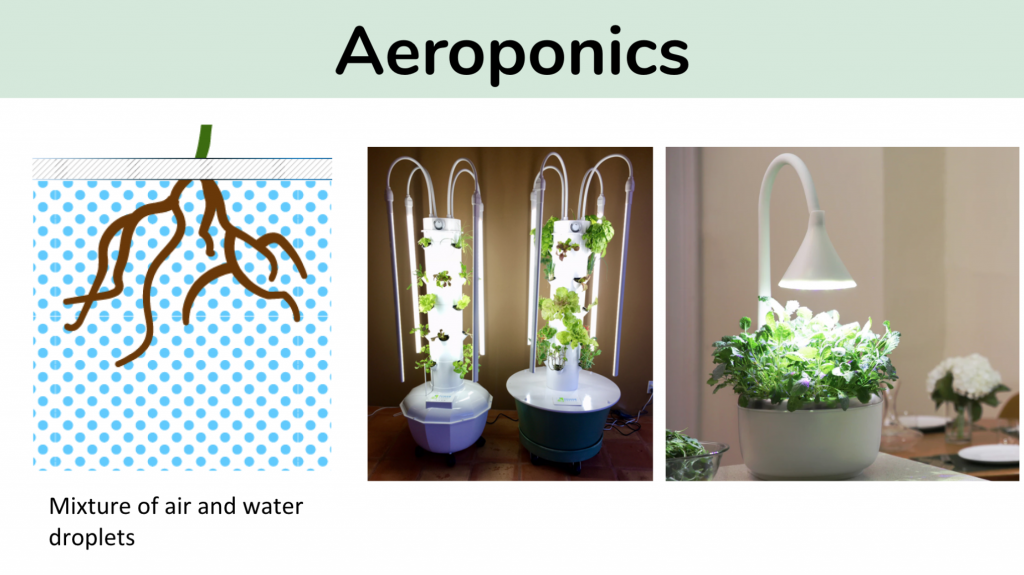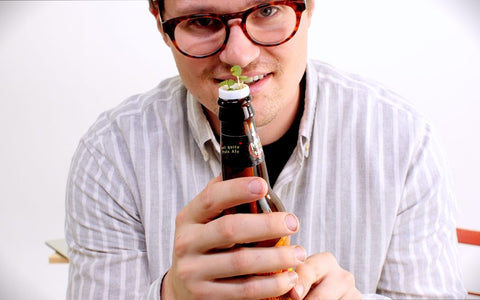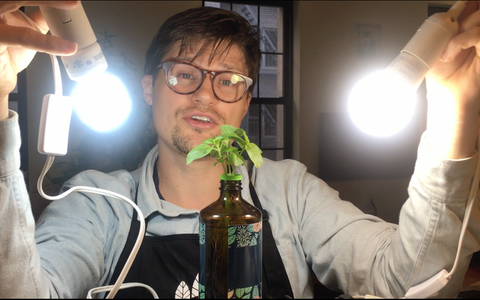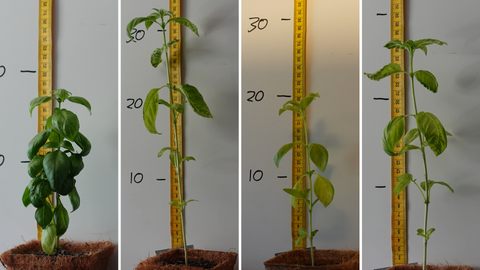Today we’re talking about an experiment we ran to compare four of the most popular hydroponic techniques. Since these techniques are used in many commercially available units, we decided to test them directly side-by-side to determine which is the most effective form of indoor gardening. If you’re new to hydroponics and want to learn more about the science behind these systems, check out our YouTube video explaining each in detail.

The Experiment: DWC Vs Drip System Vs Aeroponic Vs Kratky Vs Soil
The test included five different systems: four hydroponics (DWC, Drip System, Aeroponic, Kratky) and one control sample. We ran this experiment for three months on a bench in a basement with grow lamps situated to shine directly onto the plants. Each of the five systems contained three different plants: cherry tomatoes (model for flowering fruity plants), lettuce (model for leafy greens), and beets (to represent root crops). All containers were solid opaque plastic to keep light out of the water reservoirs and reduce aloe growth.

Check out some time-lapse videos on YouTube. This post focuses on the data of plant sizes, fruit yield, water usage, and temperature of each system.
#1: The Drip System
The drip system uses clay pebbles to anchor the plant and delivers water through an HTPE gardening irrigation system with three emitters. This system delivers water three times per day for 15 minutes each time.

#2: The Deep-Water Culture (DWC)
The Deep-Water Culture aerates the water with bubbles delivered by an aquarium tube and air stone.
#3: Aeroponics
This system uses one ultrasonic fogger purchased from a specialty supplier for around $30 each.

#4: The Kratky
The Kratky setup uses distilled water and nutrients.

Issues with the Experiment: Drip vs DWC Vs Aeroponic Vs Kratky Vs Soil
There were some limitations and problems that might skew the results:
- The plants in the DWC with the bubbles died early due to rapid water usage.
- Some plants were not given enough time to reach their full potential, like the tomato plant in the drip system that grew large but was slow to flower.
- Human error occurred, such as occasionally forgetting to water the control system.
Experiment Results: DWC Vs Drip System Vs Aeroponic Vs Kratky Vs Soil
The most consistent and comparable data came from the tomato plants:
Plant weight: The drip system grew the biggest plant but was slower to flower. The DWC tomato plant didn't make it to the end due to water issues.
Yield: The aeroponic system produced the largest and greatest quantity of fruit. Surprisingly, the Kratky was second-best in terms of fruit yield, given its simplicity and low cost.

Temperature: The aeroponic system was very warm due to the heat emitted by the fogger. The DWC system was the coolest because the constant evaporation of water caused an endothermic reaction that absorbed heat.
Water use: The DWC system consumed the most water. The Kratky used the least due to its passive system. Aeroponics was close to Kratky in water usage as the vaporized water condensed back into the system, allowing it to recirculate.

Which System Was the Overall Best?
If overall cost and maintenance are not constraints, the best results come from an aeroponic-based system. However, for cost-effectiveness, ease of setup and use, and no moving parts, the Kratky system is hard to beat.

Hopefully, this overview has been useful. Don’t forget to check out our video explaining the science behind each of these four hydroponic systems. To learn more about hydroponics, gardening, or growing your own food, subscribe to our YouTube channel, sign up for future emails from Urban Leaf, or leave a question in the comments below.








There are no comments for this article. Be the first one to leave a message!